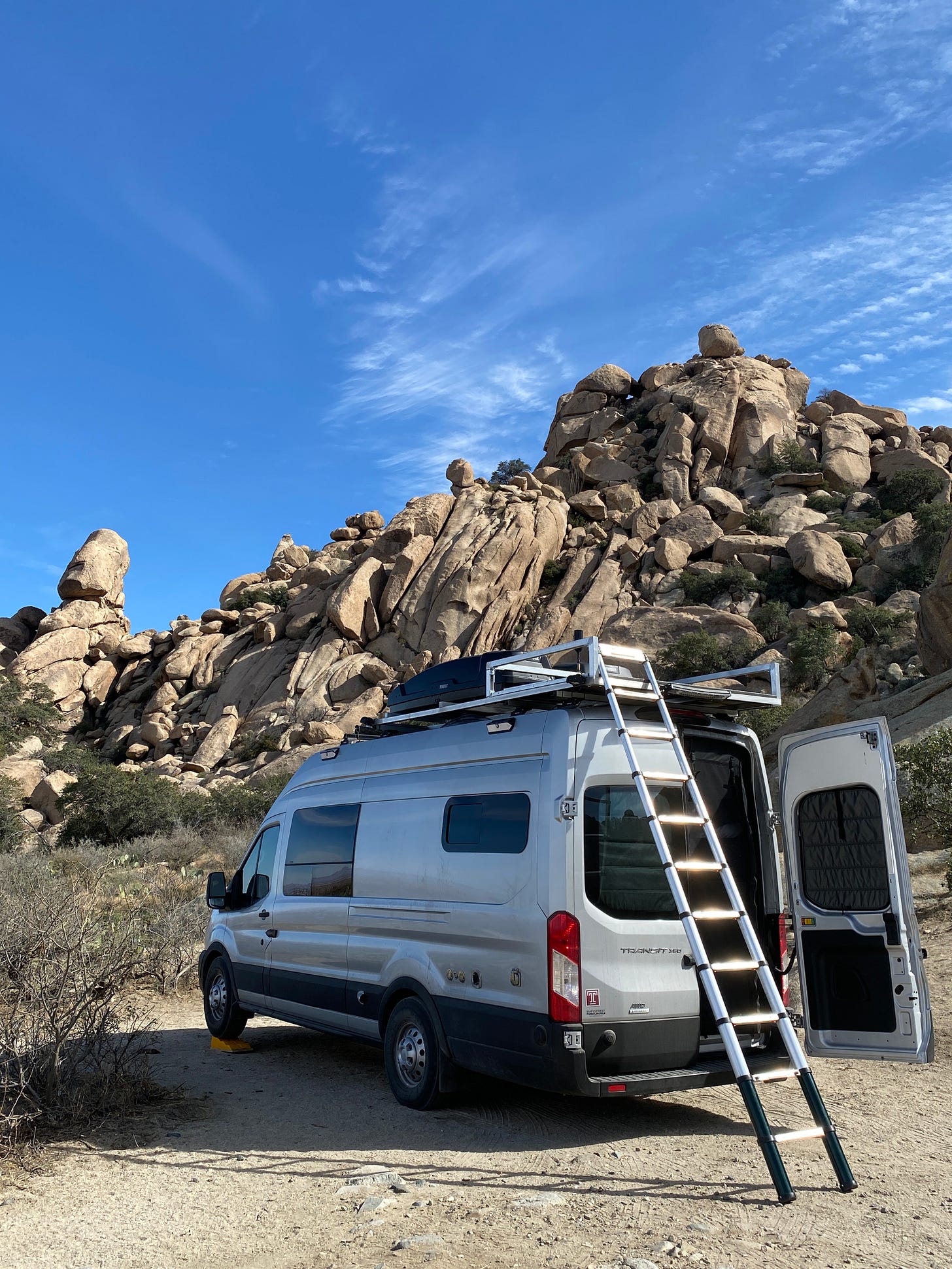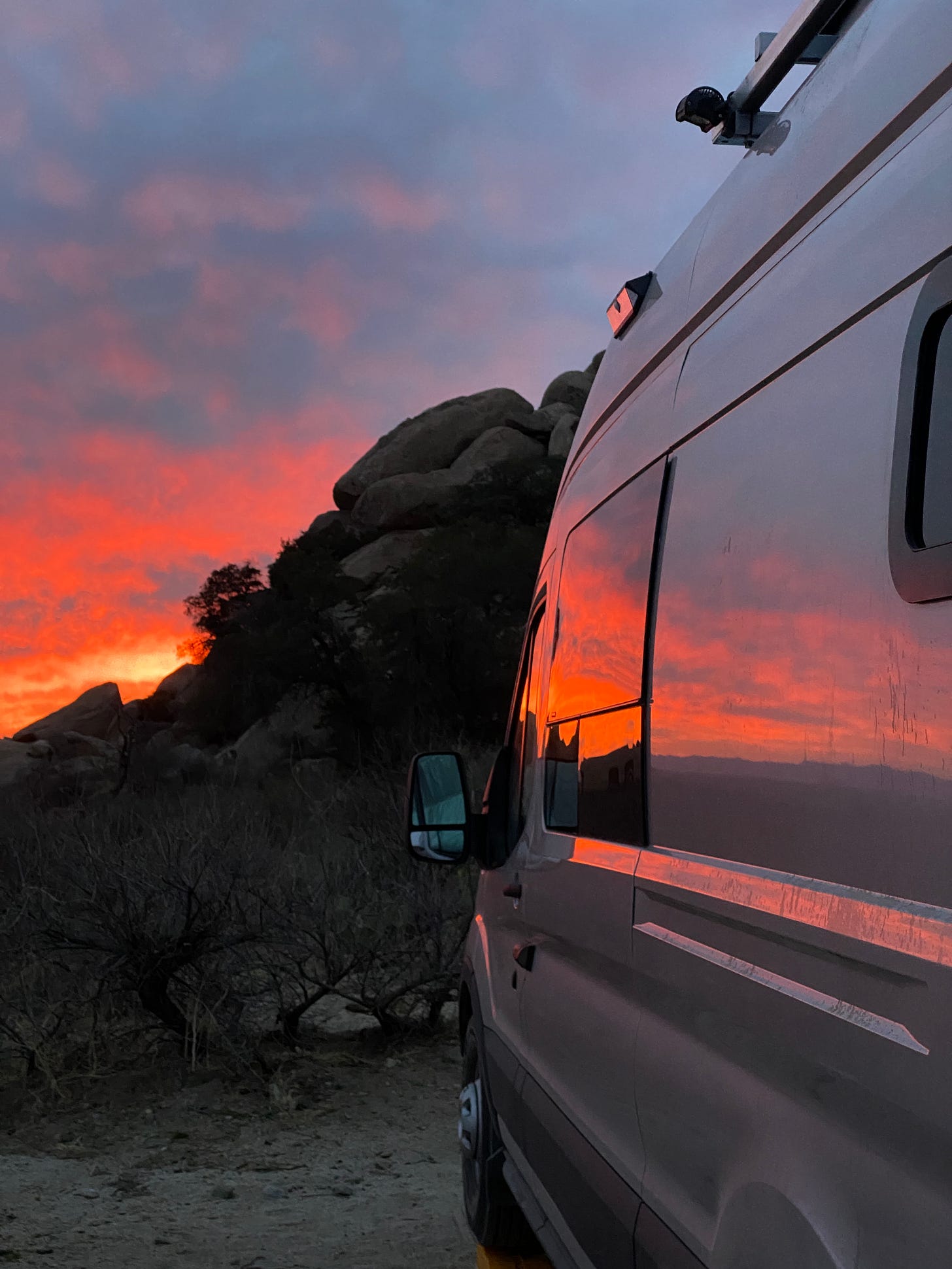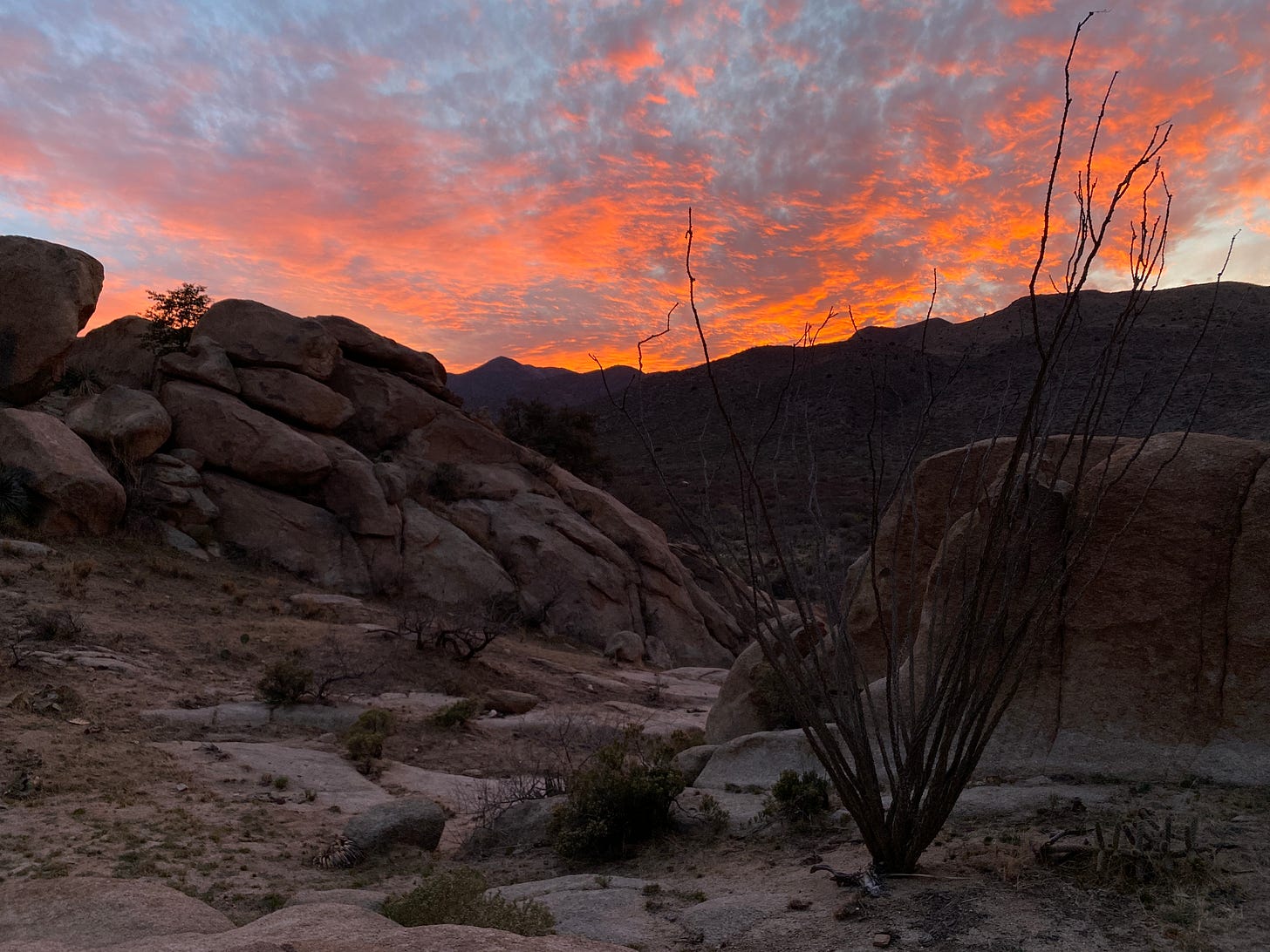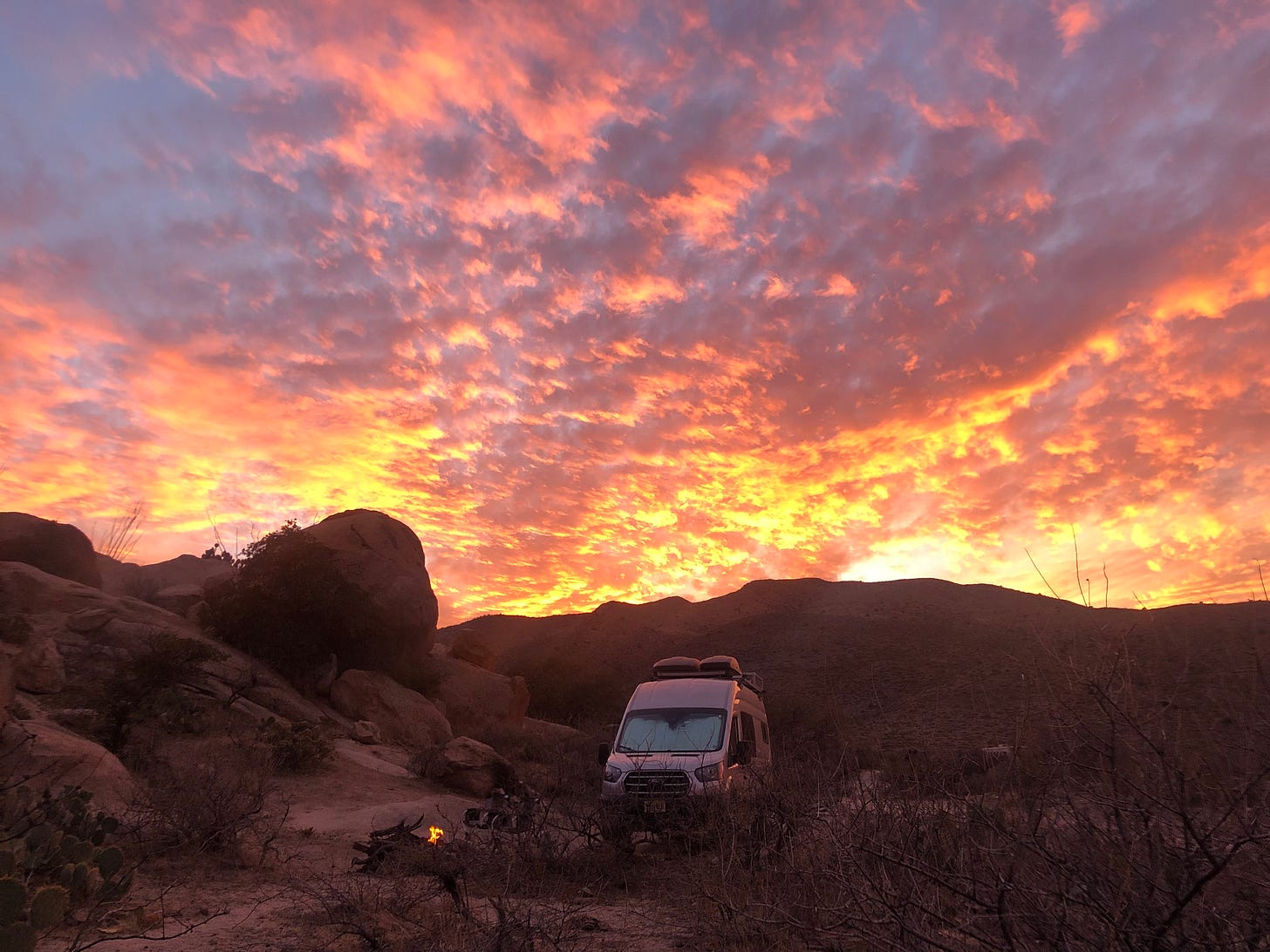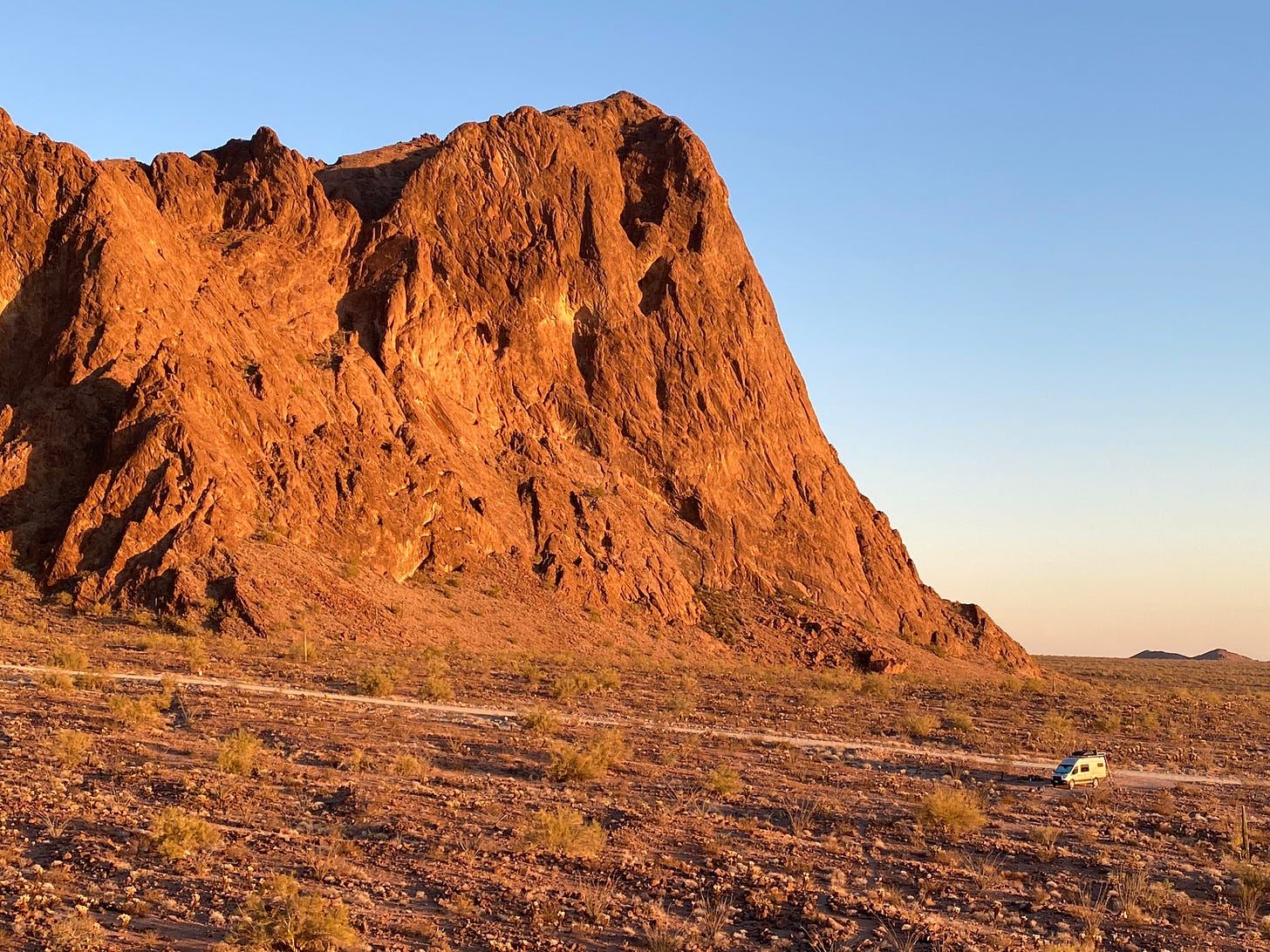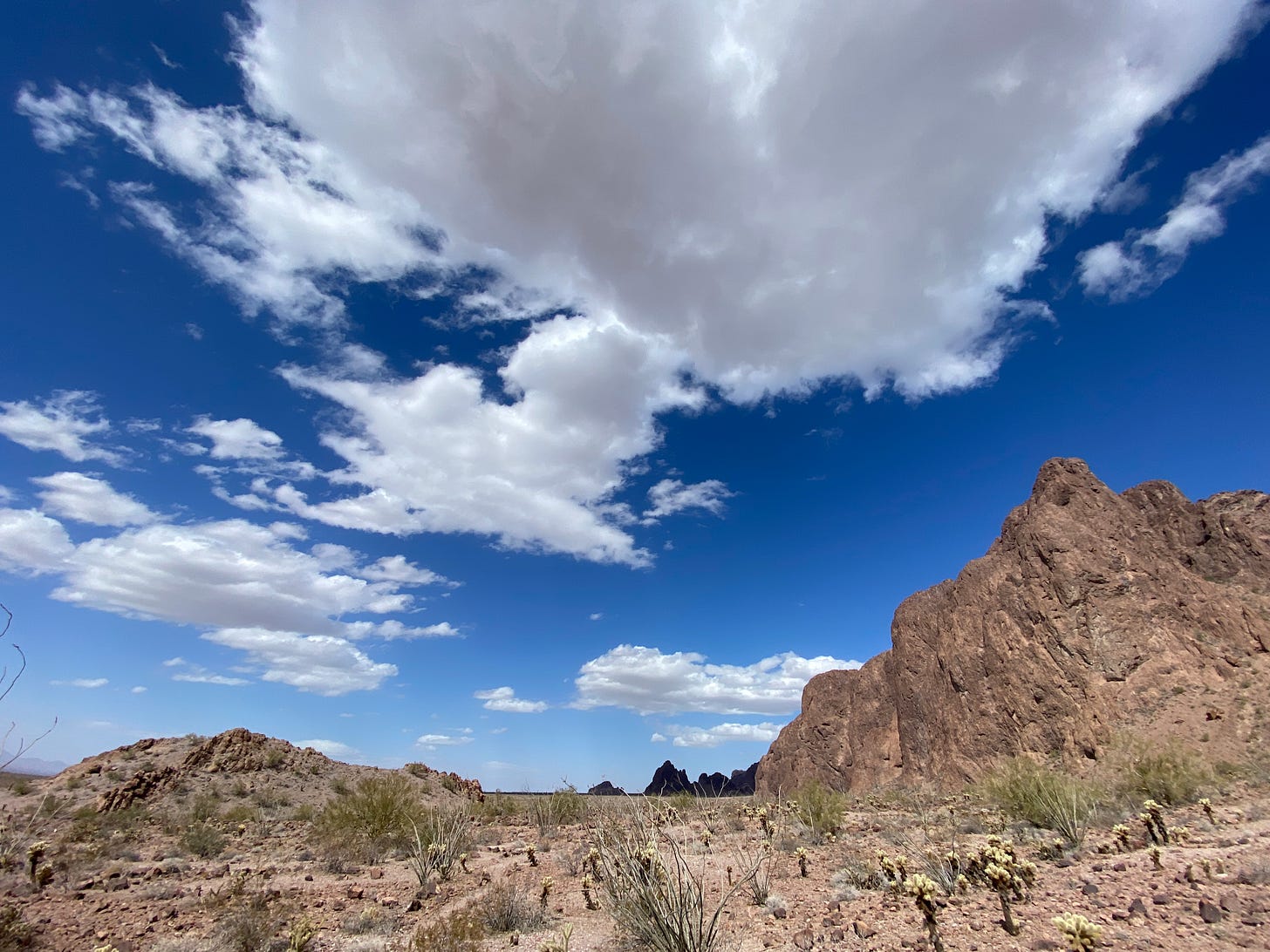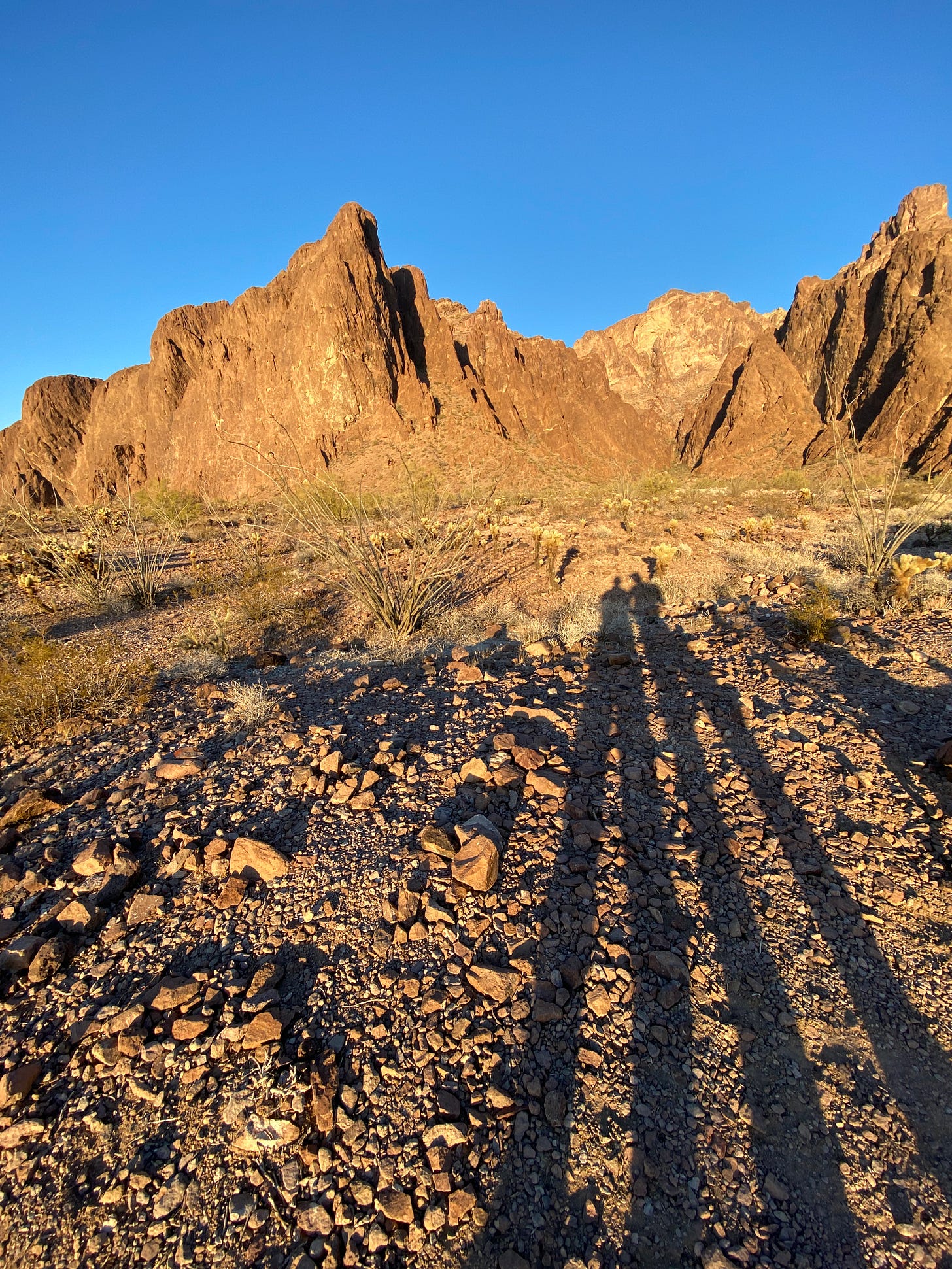What is the first thing you think of when you see the acronym “BLM”? As East Coast-urban types, our first association we had to these three letters was “Black Lives Matter.” Frankly, until we started planning for our travels, we had never heard Bureau of Land Management lands.
In general, if you are east of the Mississippi, most land is privately owned. Nearly all camping takes place in developed campgrounds, whether state, county or city run. National parks exist, of course, but, given the relative population density, places to camp overnight are more tightly controlled and the options are more limited. As a rule, you:
1. have to make reservations to “book” sites in advance
2. have to pay, and
3. if you don’t want to make advance reservations to camp in the eastern US, then you generally take your chances at Cracker Barrels, Walmarts or Bass Pro Shops.
So, the first six months of our trip required a significant amount of advanced planning out of necessity; we made reservations at state and national parks, harvest hosts, and with family and friends.
The thing is, most of our adult lives were fairly structured, regimented and scheduled to balance work/careers, raising our kids, our (and their) social schedules and pursuits, fitting in time for exercise, etc. It’s not that we didn’t have choices— we very were lucky in that respect, but our daily lives were busy and the constant act of planning and scheduling was just part of the package.
This advance planning approach served us very well in the first part of our van journey. In fact, to stay in beautiful places it was absolutely necessary. We decided we were not going to partake in Cracker Barrel and Walmart camping. It suited us and “felt normal” to have a well crafted itinerary and clear knowledge of our next destination/landing/camping spot. It was, in many ways, akin to the planning in our “stationary home” lives. And, as we were adjusting to van living and the limits and capabilities of the van itself (like water and power usage and the need to refill/recharge) having a detailed itinerary and a known daily “ending up point” (often in a campsite that offered both electric and water support) was a psychological comfort to us. It was like a having a security blanket, or training wheels. In our earlier months of travel, we typically had several weeks worth of an itinerary lined up with reservations in hand. In some cases, we even had pictures of our actual campsites.
As we enter the second half of our journey, not only has the landscape we are visiting changed but the way we travel and camp - that, is how we decide where to go and where to stay - is also changing. Instead of having a daily/weekly itinerary outlined well in advance and knowing where we will sleep each night, we have to operate differently. We decide on a general area to travel to and a general estimate of time we think we want to spend in that area. Then we do a bit of research and identify camping “possibilities.” No booking anything. We just show up.
This is where BLM land comes in. Essentially, BLM land as well as National Forest land (US Forest Service) and Wilderness Management Areas (WMAs) are free and open to the public for camping. Public lands are literally the “Wild West” of camping. There are no reservations, no formal sites, no support (water/electric/restrooms/trash facilities). If you are lucky there might be a fire-ring. And only very occasionally, there might be a vault toilet/porta-John.
West of the Mississippi there are vast tracks of BLM, national forests and wilderness management areas to camp in. Changing our approach is taking some getting used to. Initially we tried looking for places to “book in advance” and found that most camping out here, except for a few coveted State and National Parks, or the RV park/resort-style “parking lots” (which we are doing our best to avoid), is just not reservable AT ALL. The majority of camping is largely first, come first served; you arrive, take a look, you take a chance. We have started to realize that if we can let go of the need to know exactly where we will be and stay on any given day, the options and choices for camping in beautiful and untouched places that are open to the public are nearly endless. They are also very inexpensive or completely free altogether, and we have the complete flexibility and freedom to stay or move around at will.
It is a testament to both the spirit/culture of a nation that values (and often mythologizes) “pioneers” and also to just how absolutely VAST our country is that there are still lands like this that are protected, largely undeveloped and unadulterated and, unlike the big national parks, mostly under the radar. Pristine and wild places that are completely free to explore.
That said, public land camping is not without its risks and challenges. As I am writing this, we are heading down a 10 mile washboarded dirt road in an area of the desert that some other campers have reported is a good place to stay. We don’t know if there will be spots available (though typically there is so much open land that this isn’t a problem). We don’t know who else will be there. If it feels at all sketchy or loud, we’ll move on. We don’t know how long we will stay there; depending on the hikes, the views, the conditions or the weather we might stay several nights or leave more quickly. There is no check-in or check-out (the only rule we have seen is most public lands don’t allow stays longer than 14 days). All campsites are free game; if you leave your site for a day trip it might not be there when you come back. In addition, humans are really just visitors in these places— the land is home to wild creatures of all kinds. You are in their territory and encounters are possible.
Part of our process on our “moving days” now requires allowing for enough time for “site scope-out and strategy.” For example, if you get in too early to an area, other boondockers may not have vacated spots yet. If you get in too late, good spots may be taken and you may need to find a camping spot in the dark. Not fun. We also try to have at least two back up options within a 40 minute radius in other areas if our first option is unavailable or a bust. For site finding we use a combination of detailed map books, satellite views, and a few key apps that Boondockers will know: iOverlander, FreeRoam, the Dyrt, Campendium, Freecampsites.net. We also use our spidey-senses.
But oh, the rewards! Sometimes we stumble upon a place that is magical and unexpected. We are lucky to have a van small enough to travel deeper into areas that larger RVs, travel trailers and class A vehicles can’t traverse.
We have been van camping on the road for nearly seven months, moving every two to three days on average. The point is, we have stayed in LOTS of beautiful (and some not so beautiful) places. However, our top three MOST beautiful, MOST memorable campsites so far were fairly recent stays that happened once we let go of trying to advance plan and itinerary build too much. ALL three of these places were on public lands. Two of them were completely free. Only one charged a nominal fee - just $7 a night. One was in New Mexico, two were in Arizona. All three sites were very remote. All were unspeakably stunning. I think being in this kind of natural beauty and grandeur, with virtually no other people around, makes it feel undiscovered; this experience is intimate and awe inspiring in a way that is hard to explain.
We know that National Parks are the holy grails of natural beauty in the US and some are on our radar. We have also encountered on our travels how crowded they can get and how difficult it is to stay in them, which changes the nature of the experience. We are becoming more comfortable with doing less specific planning and relaxing into a general “eyes open, let’s see” approach. With many western states to visit as we carry forward (many rich with “under the radar” public lands), we will try to surrender our path more to chance. We are getting better at living with some of the discomfort of “not knowing” as a trade off for the joy and serendipity of what might just be around the bend.







